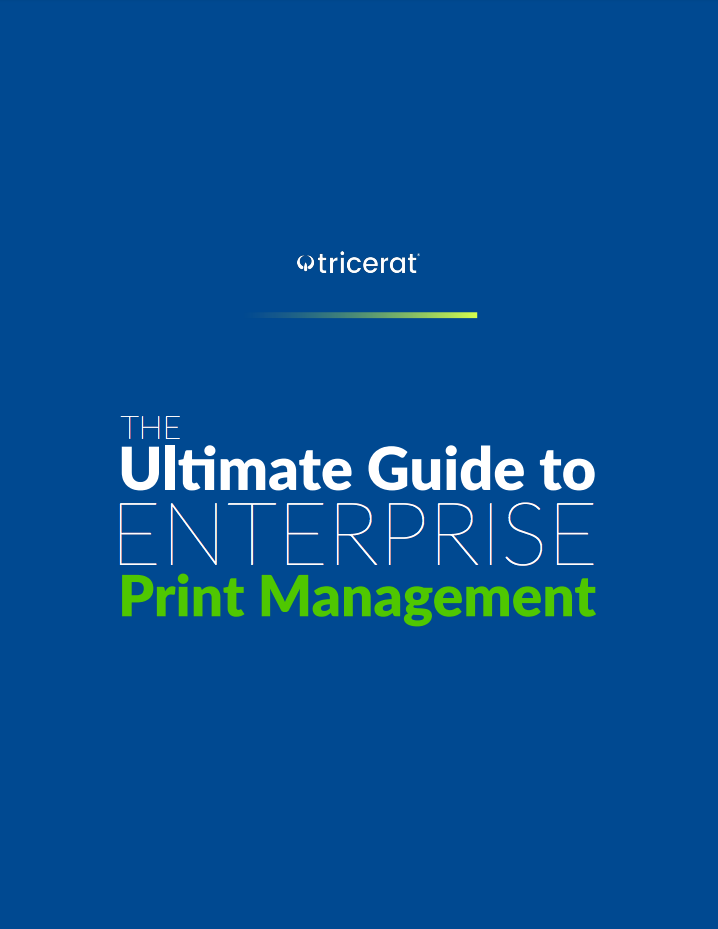Cloud print management is a technology that has transformed the way organizations handle their printing tasks. While the basic concept of cloud printing is familiar to many, there are lesser-known aspects that can significantly affect its implementation and effectiveness. Here are four things you need to know about cloud print management.
Virtual printers exist in the cloud, while physical printers remain on-premise. This setup might raise questions about how print jobs traverse between the two environments, and the answer lies in the crucial role played by connectors.
.png?width=260&height=260&name=4%20Things%20You%20Didnt%20Know%20About%20Cloud%20Print%20Management%20Blog%20Graphic%20(1).png) A connector acts as a bridge, linking the cloud-based virtual printer and the on-premise physical printer. When a user initiates a print job from a cloud-connected device, the print data is securely transmitted to the local physical printer. The connector routes this print job to the corresponding on-premise printer connected to the local network. This seamless integration ensures that printing tasks are executed efficiently, regardless of whether the printer is located on-site or in the cloud.
A connector acts as a bridge, linking the cloud-based virtual printer and the on-premise physical printer. When a user initiates a print job from a cloud-connected device, the print data is securely transmitted to the local physical printer. The connector routes this print job to the corresponding on-premise printer connected to the local network. This seamless integration ensures that printing tasks are executed efficiently, regardless of whether the printer is located on-site or in the cloud.
While cloud print management offers numerous advantages, it's essential to be aware of potential cost implications related to data transmission. Cloud printing involves sending print job data from cloud user sessions to the on-prem environment where the physical printers are located. This process leads to increased data traffic going through your cloud provider.
The amount of data generated by print jobs can vary significantly based on factors like print volume, document complexity, and image-heavy content. Cloud providers may charge based on data transfer, and the increase in print-related data could lead to unexpected costs if not managed appropriately.
To mitigate this, some cloud print management solutions employ data compression techniques. Data compression reduces the size of print jobs before transmitting them to the cloud and subsequently to the physical printer. By compressing print data, the overall data transfer volume is reduced, potentially resulting in cost savings.
However, it's crucial to consider the trade-off between data compression and print quality. While compression can save on data transfer costs, excessive compression might compromise print quality, leading to blurred images or distorted documents. Striking the right balance between compression levels and print quality is essential to ensure cost-effectiveness without compromising the end-user experience.
Before adopting a cloud print management solution, it's vital to understand your cloud provider's pricing model, any potential data transfer costs, and whether data compression options are available. By being cognizant of these factors, businesses can make informed decisions about cloud print management, optimizing costs while ensuring a seamless and high-quality printing experience for users.
Moving to a cloud-based desktop environment can lead to enhanced flexibility, accessibility, and collaboration for remote teams. However, for smooth print operations in such environments, an essential piece of the puzzle is often overlooked: Windows print drivers.
While the applications and documents might be hosted in the cloud, most printer manufacturers still design their hardware to work with traditional Windows print drivers. Consequently, cloud desktops and applications must have compatible Windows print drivers to facilitate communication between the software and the printer. This compatibility ensures that print jobs from cloud-hosted applications are accurately transmitted to the printers, maintaining the required formatting and preserving the document's integrity.
 Though cloud print management offers convenience and efficiency, it is vital to address potential security and compliance concerns associated with the technology. Storing sensitive data in the cloud and transmitting print jobs between cloud and on-premise printers require robust security measures.
Though cloud print management offers convenience and efficiency, it is vital to address potential security and compliance concerns associated with the technology. Storing sensitive data in the cloud and transmitting print jobs between cloud and on-premise printers require robust security measures.
To safeguard against unauthorized access and data breaches, cloud print management solutions often incorporate encryption protocols to protect print data during transmission. Additionally, user authentication methods, such as secure print release, ensure that sensitive documents are accessed only by authorized personnel.
Furthermore, for businesses operating in regulated industries, adherence to compliance standards like HIPAA (Health Insurance Portability and Accountability Act) and GDPR (General Data Protection Regulation) is crucial. Cloud print management solutions must align with these regulations, offering features like audit trails and print tracking to maintain data integrity and compliance.
If you're eager to explore the topics covered in this blog post in more depth, watch our "Journey to the Cloud" webinar series by clicking below.
